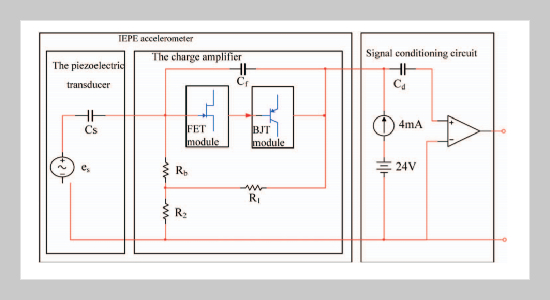Yutian Wang1, Zhe Yang1, Pengfei Cheng This email address is being protected from spambots. You need JavaScript enabled to view it.1 and Hongjin Li1 1Shool of Electrical Engineering, Yanshan University, Qinhuangdao, Hebei Province 066004, P.R. China
Received:
March 18, 2015
Accepted:
July 20, 2015
Publication Date:
September 1, 2015
Download Citation:
||https://doi.org/10.6180/jase.2015.18.3.10
Integral electronics piezoelectric (IEPE) accelerometers are the vibration acceleration sensors using piezoelectric effect. Analyze the main noise sources of IEPE accelerometer circuit. With the noise model of En-In the internal noise is equivalent to input, realizing the direct comparison of the input noise and signal, and easily getting the noise effect on the signal. Propose the transformation principle of Y-Δ to the T network noise analysis to reduce the difficulty of the noise analysis. Deduce the formula of the circuit background noise in IEPE accelerometer in the broadband. The comparison of noise analysis values of theoretical and obtained by PSpice software proves a good correlation and shows the correctness and effectiveness of the formulas. Meanwhile, put forward the methods of total noise reduction in different frequencies based on the deduced noise formula of the contributions of various noise sources at the input to the total noise. The studies provide a theoretical basis for IEPE accelerometer circuit design in low noise, parameter selection and performance optimization.ABSTRACT
Keywords:
IEPE, Vibration Acceleration Sensor, Circuit Noise, Broadband
REFERENCES
















